If you’re a pet owner, odds are you’re also a fan of Mother Earth. And that means you do your best to make environmentally conscious decisions. Dog owners can purchase biodegradable poop bags. But what if you have cats? All of those trips between the litter box and trash can add up. Even if you recycle garbage bags in the process, it adds up. How to lessen your carbon footprint? Plenty of owners are switching to flushable cat litter. And while it sounds like the perfect compromise, there are some drawbacks. We’ll explain – before you lift the toilet lid.
Cat Litter
Would you believe pet owners in the U.S. spent $3.9 BILLION on litter products last year? Or that the rates are expected to continue to rise? That includes everything from the litter itself (whether clumping or not) to liners to help with odor control and the boxes themselves. And the pet care industry continues to research and demand what owners want, developing newer and newer products.
This is where flushable cat litter comes in. Because while only around 1-3% of owners currently use them, more and more people are looking for eco-friendly alternatives. And your standard kitty litter? It doesn’t fit the bill.
Conventional Cat Litters
“Conventional” cat litter consists of clay, silica, or a combination of the two. It’s popular because the granules absorb fluid. This creates those easy-to-clean clumps everyone loves so much. However, the same process would lead to a plumbing nightmare if you tried to flush them down the toilet.
And clay? While a natural element, it isn’t environmentally friendly. The clay for litter comes from strip mining. That term probably rings a bell as a negative for the environment. It leads to pollution of local waterways and the destruction of the local ecosystem. And TWO MILLION TONS of clay get mined every year. (It makes flushable cat litter sound more attractive, right?)
Flushable Cat Litters
In contrast, flushable cat litters come from biodegradable materials. When you add fluid, they DON’T harden. This makes them safe to dispose of down the toilet (in theory – we’ll get to that). Even if you skip the plumbing option, they’ll break down in the landfill.
You’ll find plenty of different materials:
- Corn: This shows up on the label as compressed corn, whole kernels of corn, or corn pulp.
- Shredded Paper: Companies use post-consumer paper (so, recycling at work) and form them into soft pellets. Usually, they’ll add baking soda to provide odor control.
- Wheat: Wheat starch WILL naturally clump when you add any kind of moisture. This makes it scoopable.
- Wood: Wood flushable cat litters feature sawdust, shavings, or reclaimed wood. They’re not treated with chemicals, and they smell like the trees they came from.
Why Use Flushable Cat Litters?
When you compare the environmental impact of conventional and flushable cat litters, there’s no contest. The biodegradable (and recyclable in the case of shredded paper) materials come out on top. It’s why plenty of people make the switch. And since the eco-friendly nature works, whether you take the scooping to the trash (in a paper bag – no plastic) or over to the toilet, you have flexibility.
But the positives don’t end there. Not having to fuss with bags, in general, make people’s lives easier. If you keep your cat’s litter box in the bathroom, you don’t have to go ANYWHERE. Simply lift the lid, and you’re good to go! If you live in an apartment with the trash dozens of floors DOWN, this makes your life easy.
Or you can go completely green. Flushable cat litters ARE biodegradable. That means you can create a compost pile. Scoop the urine and feces into a (biodegradable) bag and toss them. Then transfer the litter to the pile. You can’t use it for food crops, but it works perfectly for flower gardens.
The Dark Side of Flushable Cat Litters
Of course, any time you hear something that sounds too good to be true, it usually is. And flushable cat litters come with some concerns. And before you jump to ditch your conventional litter, it’s important to understand what you’re getting yourself into.
Expense
Strip mining is costly to the environment, but it’s not the most expensive process out there. So conventional litters end up costing less than flushable cat litters. A LOT less. You’ll need to decide whether those extra pennies are worth it.
The Non-Clumping Factor
What makes flushable cat litters work is that they DON’T clump. If they did, you wouldn’t be able to get them through your plumbing. But clumps make scooping easier. In fact, it’s what 63% of cat owners look for in a litter.
Except for wheat-based flushable litters, you’re going to face a bit more mess. And even those aren’t perfect. Are you willing to make that trade?
Health Concerns
Corn and wheat ARE natural materials. And they’re not difficult to come by. (In fact, you find them in plenty of cat foods) But some felines have allergies to the starches. Not to mention plenty of HUMANS. You or your poor kitty could end up miserable when exposed to the dust created by the flushable cat litter.
Even worse, cats are common hosts for Toxoplasma gondii. This parasite doesn’t usually affect the cat, but it’s zoonotic and poses a serious concern for pregnant women. Even worse, it’s a severe problem for sea animals. (And, yes, the eggs of the parasite have no problem surviving through wastewater treatment plants) You’re running similar risks to those posed when you teach a cat to use the toilet.
Wait…Plumbing Problems?
As surprising as it sounds, flushable cat litters don’t always agree with getting flushed. Depending on your system, you could find yourself programming the plumber into your phone.
Septic systems didn’t have cat litter in mind when they got designed. The extra bulk can lead to failures. Or you may find yourself exceeding the capacity of your system! That isn’t a call you want to make when sewage starts backing up into your lawn.
And since you’re so ecologically responsible, you probably installed a low-flow toilet. Good for the environment, but bad for flushable litter. They can only handle a few small clumps at a time. That means you’re going to end flushing MORE. So you’ll spend MORE time and MORE money using MORE water. Not quite the choice you thought you were making.
Regulations
Wastewater treatment plants aren’t always designed to handle flushable cat litters. Similar to septic systems, they can struggle to cope with the bulk created by the materials. And some states have decided they DON’T want to deal with the problem.
In Rhode Island, they have regulations in place to prevent flushing of ANY kind of litter. California passed a bill to require flushable cat litters to display a statement DISCOURAGING owners from using the toilet to dispose of their product.
So before you pick up a bag at the store? Research your state and make sure you CAN flush your litter.
Choosing a Flushable Cat Litter
While it seems like flushable cat litters are thin on the ground, you’ll find quite a few options out there. But they’re not all the same. When you decide to make the change, you’ll want to check for a few key features:
- Flushable: Seeing “flushable” on the front isn’t good enough. You want to check that the manufacturer made sure their litter went through testing with a third-party company. This makes sure it’s safe for the toilet’s plumbing and septic systems.
- Non-Clumping: It’s annoying, but you don’t want a clumping litter. You’ll end up with clogged pipes. If you take the risk, make sure you minimize the amount you add with each flush.
- Materials: With so many plant-based materials used for flushable cat litters, you need to consider what your cat will tolerate. They may protest the new litter and start choosing alternative spots.
Switching to a Flushable Cat Litter
Unless you’re starting with a new kitten, odds are your cat may register a complaint about an abrupt switch in litters. Some cats will use whatever you offer, but most HATE change. This means you’ll need to do a transition.
- Leave the original boxes, but add one new box with the flushable cat litter.
- Watch to see if your cat will use it. If they NEVER go near it, you may need to try a different brand or material.
- If they start trying it, start mixing the flushable litter into the old boxes.
- Gradually increase the amount of flushable litter in each box until you’ve eliminated the old litter.
Keep in mind that not every cat will tolerate a change. While making a green change in the house is important, so is the well-being of your favorite feline. You don’t want to cause stress over something like litter.
Best Flushable Cat Litters
Flushable cat litters come with plenty of pros and cons. But since they ARE biodegradable, you can breathe a sigh of relief using them. Maybe you won’t scoop the box into the toilet, but you can always scoop into a paper bag and know they’ll break down at the dump. That’s better than using conventional litter in a plastic bag (which will last almost forever). As long as you and your kitty can breathe easily around the plant material? You’re good to go!
Bolux uses tofu as the basis for their flushable cat litter. (Yes, tofu – soy is multifunctional) The pellets will form clumps for you (sort of) without sticking to the litter box or the insides of your pipes. They also added activated carbon to help control odors. You don’t need to worry about any dust or tracking, which should minimize allergy problems.
Downsides? The pellet texture wasn’t a big draw for some cats. They like a softer feel under their paws. And while it does contain carbon, owners felt the odor control didn’t work very well.
The Good
- Tofu-based
- Pellets
- Some clumping
- Activated charcoal for odor control
- No tracking and low dust
The Bad
- Cats don't like pellet texture
- Poor odor control
If you’re worried about odor control, then Naturally Fresh provides an ideal flushable cat litter. They use walnut shells as the base. And while that may sound uncomfortable, it’s actually soft on your kitty’s paws. It also forms clumps, making scooping time better for you. The walnut shells pull up odors, too. You’ll find an “alpine meadow” scented option, or you can stick to the unscented version if you or your feline happens to be sensitive.
The downsides? The clumps take 20 minutes to form. That’s not necessarily a deal-breaker, but something to keep in mind. The real problem is that the clumps are so tight, they’re difficult to flush. You’ll need to go one at a time to prevent a clog in the pipes. You’ll also see some tracking of dust.
The Good
- Walnut shell-based
- Granules
- Some clumping
- Odor control
- Low dust
The Bad
- Clumps take 20 minutes to form
- Need to flush clumps one at a time
- Tracks through house
With ökocat, you get plenty of options for your flushable cat litter. They offer three different sizes and three formulas, including a “super soft” – though all of their wood pellets are gentle on your cat’s feet. The wood fibers are also champions at absorbing fluid AND odors. That means you’ll get some clumping action to help with clean-up. You also won’t need to worry about any loose dust getting into the air to aggravate allergies.
So what are the downsides? The clumps that form aren’t very tight. They’ll fall apart easily. That’s good for your pipes but a pain when you’re trying to keep a clean litter box. And while you’re getting pellets instead of granules, people complained about tracking issues through the house.
The Good
- Wood fiber-based
- Pellets
- Some clumping
- Odor control
- Low dust
The Bad
- Clumps fall apart
- Tracks through house
As you can guess from the name, sWheat Scoop uses wheat as the basis of their flushable cat litter. That means plenty of clumping power as the starches go to work absorbing fluid and odors. And while you may want to consider possible allergies, they don’t include extra scents you’ll need to worry about. They also keep dust to a minimum.
Downsides? This is one of the more expensive options out there. And while wheat does great at drawing moisture out, this litter isn’t the best at odor control. It’s also a fine-grain texture, meaning you’ll see tracking through the house (keep the broom or vacuum handy).
The Good
- Wheat-based
- Granules
- Some clumping
- Odor control
- Low dust
The Bad
- Expensive
- Poor odor control
- Tracks through house
Weruva takes their flushable cat litter and adds an extra twist – green tea. Hinoki wood works as the base, giving you a break from potential allergens such as corn, wheat, or soy. Hinoki naturally prevents the growth of mold and bacteria, which means you won’t have to deal with odors. And green tea? It works the same way. The pellets are soft on kitty toes while minimizing tracking problems.
The downsides? These pellets are larger than you usually see in other flushable litter options. If you have a long-haired cat, they may get stuck in the fur. And the texture means the clumps aren’t the strongest. You could also see some issues with your pipes if you flush too much at one time. Try to take it easy.
The Good
- Hinoki and green tea-based
- Pellets
- Some clumping
- Odor control
- Low dust
The Bad
- Large pellets can get stuck in fur
- Clumps fall apart
- Need to flush clumps one at a time
With a proud label on the bag, letting you know their litter is safe for flushing and septic systems, you can’t go wrong with World’s Best. They even include handy instructions (at the bottom of the bag). Whole kernel corn’s the secret material here, and it goes to work forming clumps that won’t wreak havoc on your pipes. You won’t need to fight with dust OR odors, allowing everyone to breathe without a problem.
So what are the downsides? This is a pricey option (but they do have the backing of third-party testing). And while they claim low dust, some people struggled with the natural corn settling everywhere. Not to mention tracking from the granules. Oh, and odor control didn’t rank high with everyone.
The Good
- Whole kernel corn-based
- Granules
- Some clumping
- Odor control
- Low dust
The Bad
- Expensive
- Dusty for some people
- Poor odor control
- Tracks through house
Feeling Flushed
With excessive plastic finding its way to landfills and the ocean, everyone wants to make more ecologically sound decisions. And trooping to the trash can with bag after bag of litter scoopings? That doesn’t make sense. Flushable cat litters are much more reasonable.
But you need to take care there, too. Some regulations – not to mention sewage systems – say no. You may be better off setting up a compost spot. Knowing you’re using a biodegradable material CAN give you options. And you’ll stay on track with your greener choice.
As long as you keep your kitty’s preferences in mind. You don’t want THEM to flush your choice!

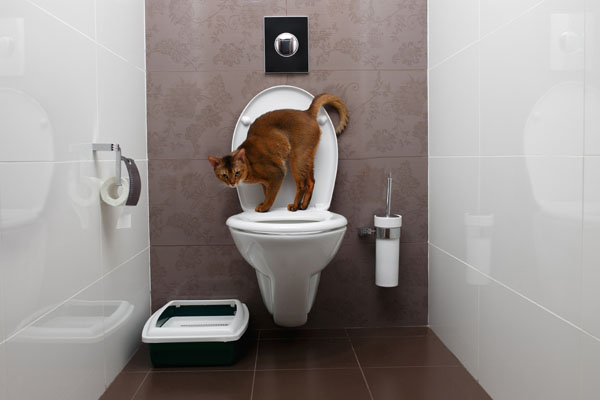
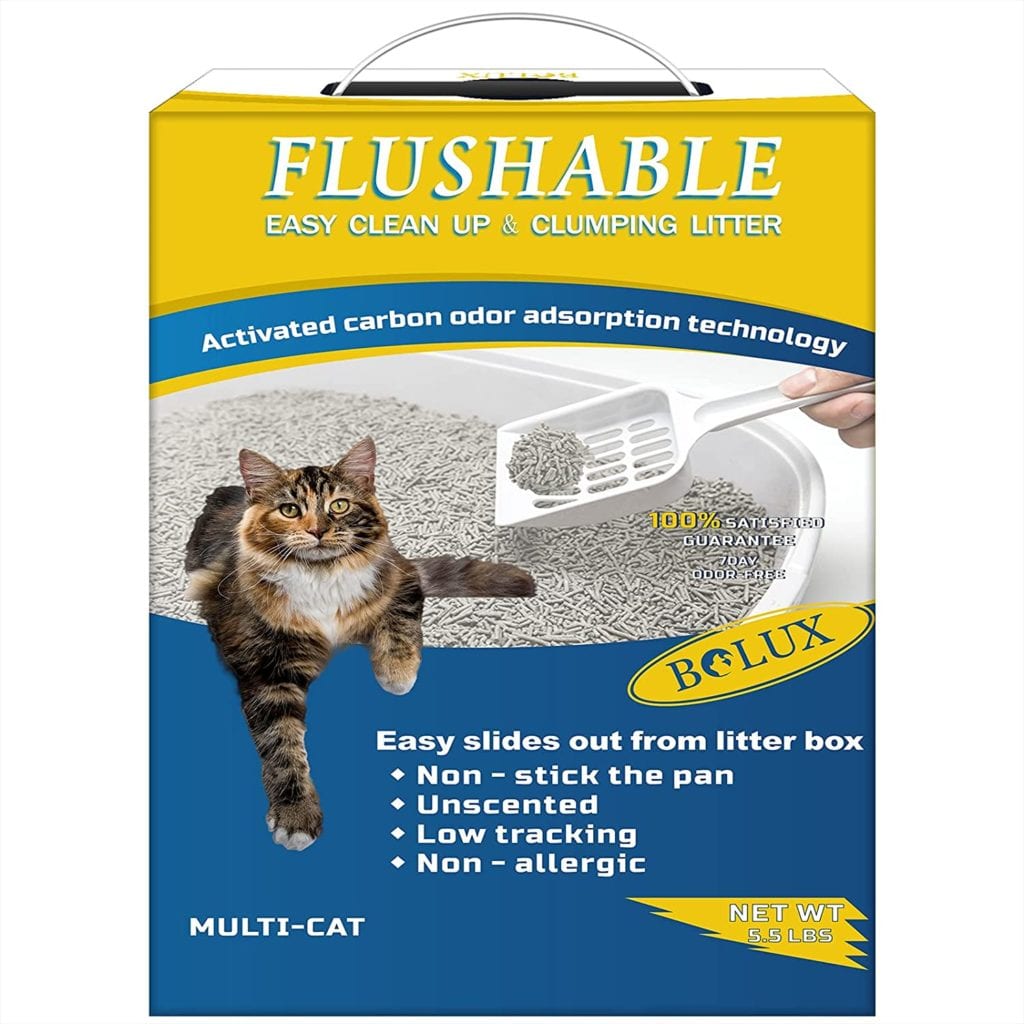
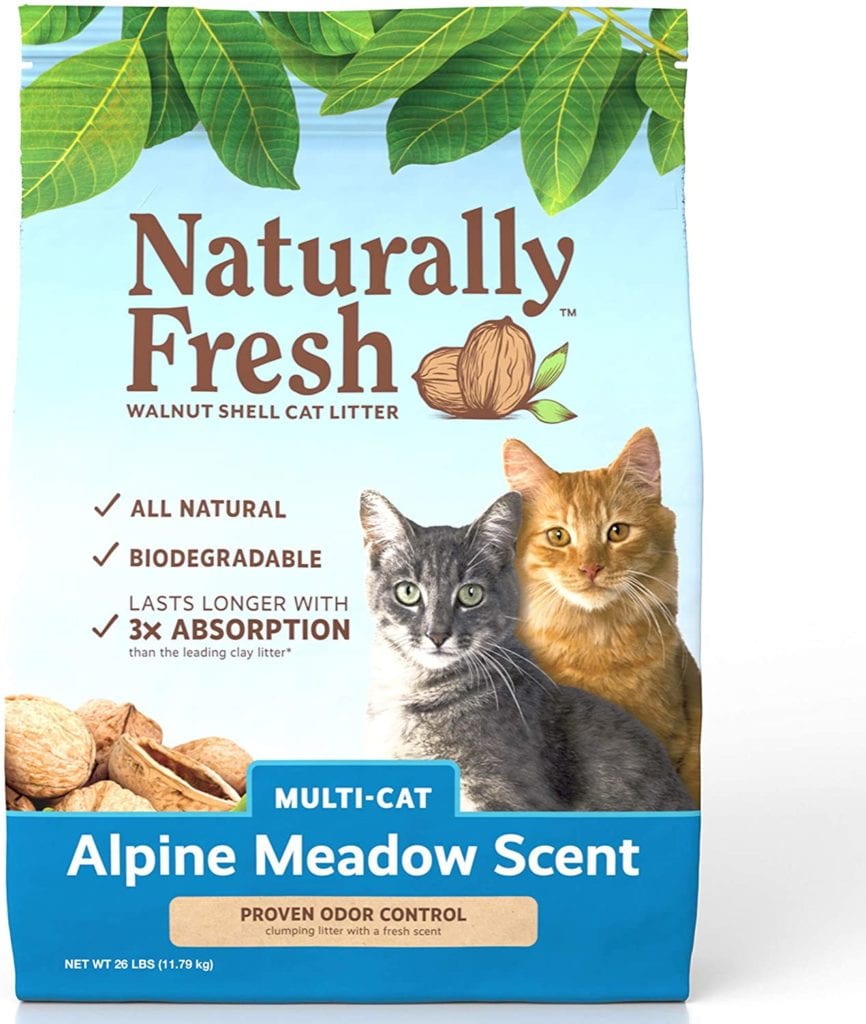
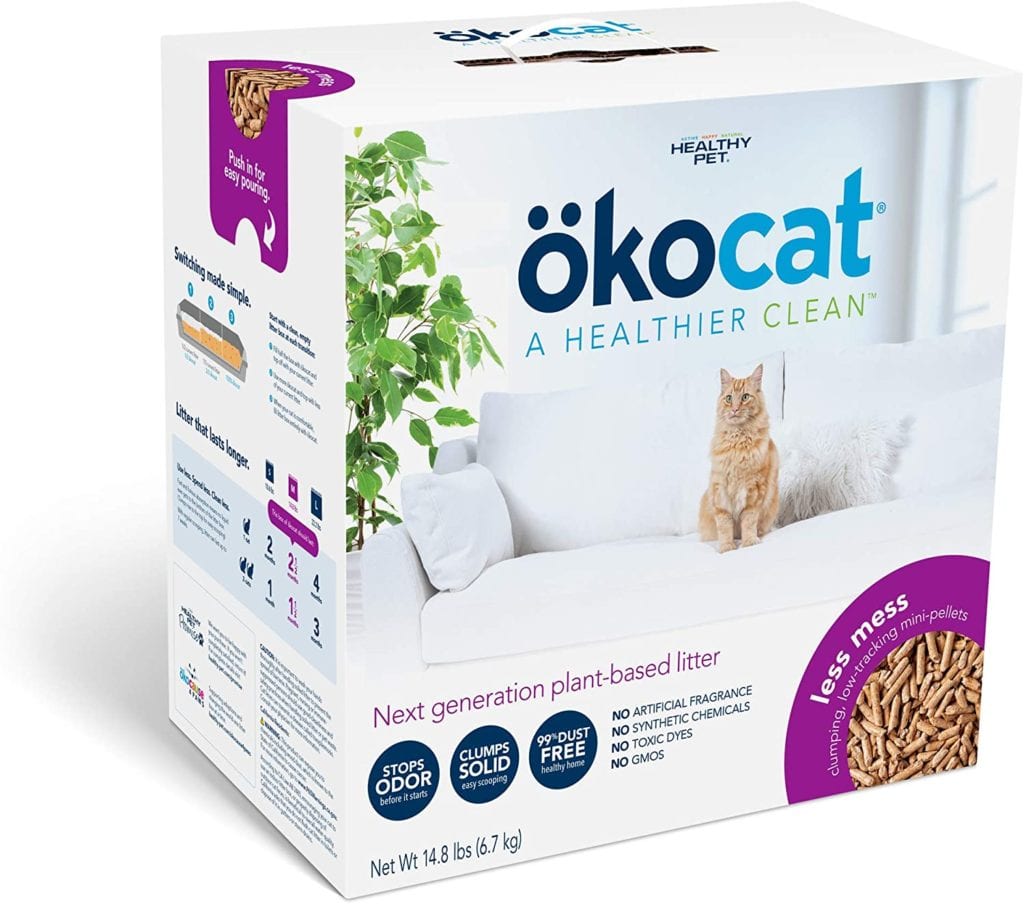
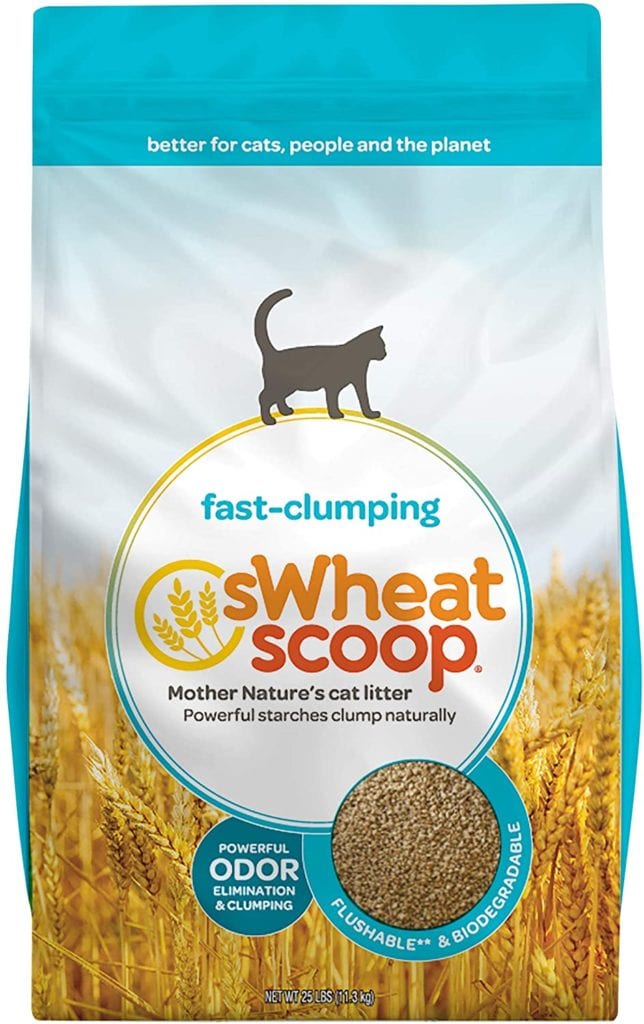
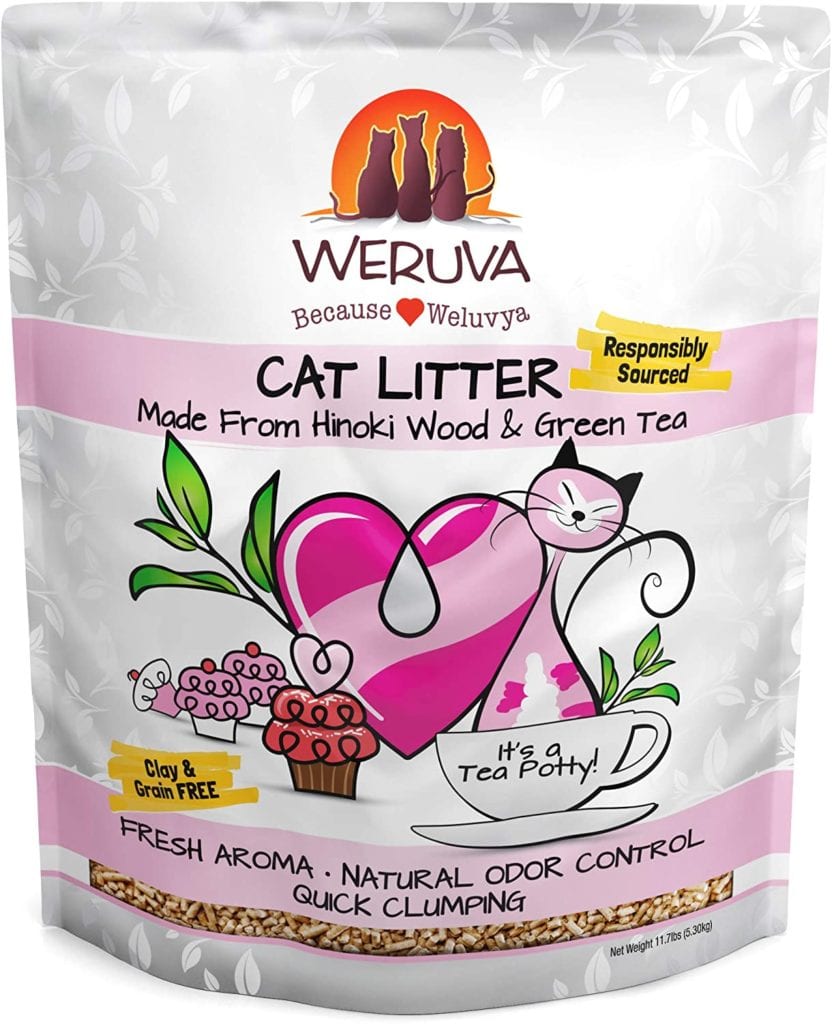
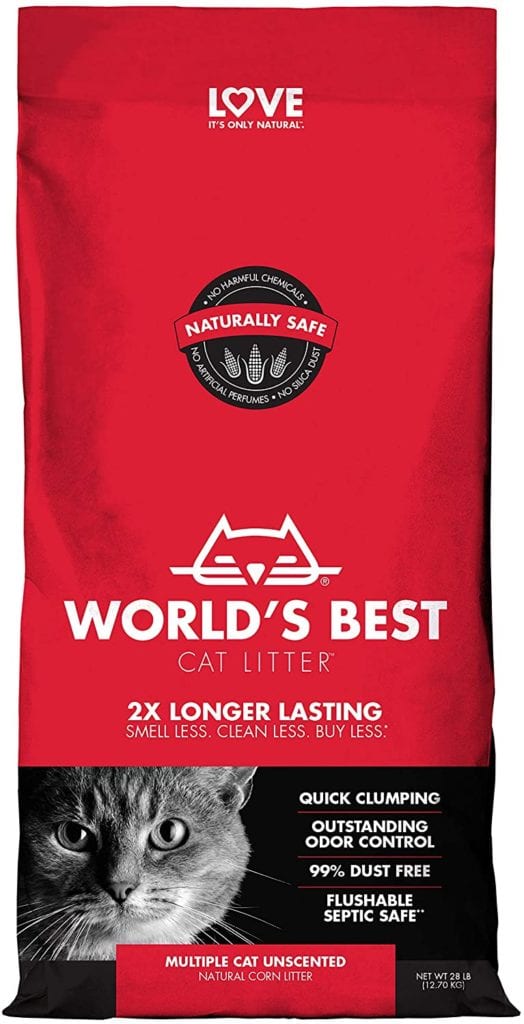
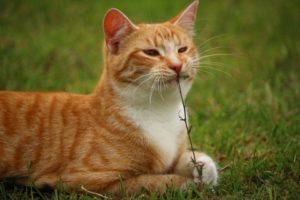
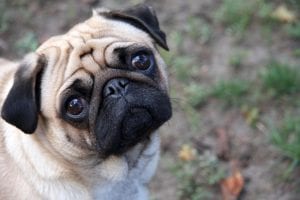
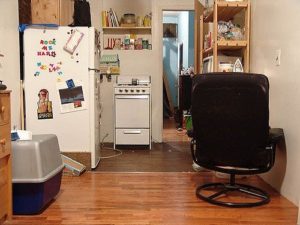
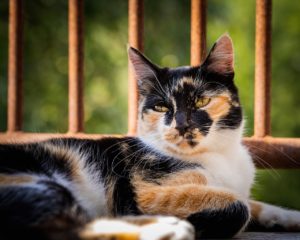
No comment yet, add your voice below!